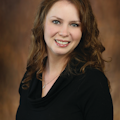How teledentistry can help protect and retain staff and patients
During the ongoing struggle with COVID, dental practices have reopened after a long shutdown that began in March. However, many are still struggling. In addition to trying to get enough personal protective equipment (PPE) and physical mitigation equipment, dentists are having a hard time finding and retaining team members.
Let’s be honest; we work in the riskiest profession for COVID exposure. We spend most of our days in a patient’s oral cavity in close proximity to the face, where exposure risk resides. In the decades that I’ve been in dentistry, I can’t remember a time when dentists and hygienists have been so divided on what constitutes adequate infection control methods to protect staff.
However, when a dentist takes every possible precaution to ensure the safety of team members, the team in turn will trust those precautions and appreciate having a safe and comfortable work environment.
This sounds easy enough, but what I’ve learned while listening to dental assistants and hygienists during the past eight months is that there is an extremely broad interpretation of how dental offices should prepare. Very often the determining factor of whether or not a team member feels safe is communication or lack thereof.
Social media is an outlet for opinions and stories, and dental team members throughout the country report that staff are electing not to return to the dental office due to coronavirus transmission risks, even when many additional measures have been taken. Dentists are faced with the reality of costly PPE, additional time needed to disinfect rooms, and the mandated requirement to see fewer patients. In the meantime, many dental hygienists and assistants have found alternative careers or elected to take a hiatus from the profession, creating a staffing crisis for many practices.
There are still patients to treat, positions to fill, and no qualified applicants to interview. However, there are ways dentists can stand above the crowd to ensure staff safety. One of the most effective is the implementation of teledentistry for screenings, evaluations, consultations, and patient care instructions. Using teledentistry will free up valuable chair time and reduce exposure risk, all while saving on PPE.
Questions arise regarding the interpretation and necessity of aerosol-generating equipment during treatment. The Centers for Disease Control and Prevention (CDC) and Occupational Safety and Health Administration (OSHA) recommend “minimizing aerosol generating procedures,” which can be interpreted in a variety of ways.
For example, “minimize” versus “eliminate.” Do we use the ultrasonic or not? Do we use it on some patients and not on others? Does failure to use it represent a lack of standard of care? Some say yes, and some say no. The truth is, nearly every dental procedure requires us to generate aerosols in some form, including with the air/water syringes and handpieces. The more people who populate the office outside of the core dental team, the greater the risk of exposure to COVID.
How teledentistry can help
Teledentistry is not just for remote dental consultations. Incorporating it into a practice can aid in safety protocols. As part of the guidance set forth for dental practitioners, OSHA recommends that we “maximize use of telemedicine for non- emergency consultations, and prioritize urgent and emergency procedures.”1 Those practices that implemented teledentistry to assess patients during the pandemic learned that this practice model worked well even after in-person dentistry resumed.
Teledentistry creates an in-office workflow that enables the hygienist to see patients and collect data and images. It then allows the dentist to conduct a periodic oral evaluation from the safety of his or her office without the need for additional PPE.
The dentist can then contact the patient via video conference or messaging to discuss findings and any treatment plan if needed. The time saved allows the hygienist additional time to turn over the room and prepare for the next patient.
In-office workflows are not the only option with teledentistry. Patients can consult with the doctor and discuss treatment plan presentations, all from the comfort and safety of their homes.
What’s more, limited evaluations and postoperative check-ups can happen via imaging conducted by the patient on either synchronous (live) or asynchronous (store and forward) modes. Either way, the dental team will be relieved that they are limiting the amount of people and exposure in the office, and the open chair time can be reserved strictly for restorative procedures.
Billing for teledentistry
Synchronous and asynchronous teledentistry each have a dedicated CDT Code: D995 and D996, respectively. The confusion around dental coding leads many to believe we must use either the CDT code for evaluation or the code for teledentistry. In fact, it is correct to use both. The evaluation code is the procedure performed, and the teledentistry code is the method of delivery. For example, you could use the D0140 limited oral evaluation in conjunction with the D9996 asynchronous code.
Patient feedback
A recent study to assess patient satisfaction with teledentistry encounters across five categories looks promising, with 97% of patients reporting a positive experience.2 In fact, in all five categories, patients reported an overwhelmingly positive response. The categories included patient satisfaction, ease of use, effectiveness including increased access to clinical services, reliability of teledentistry system, and usefulness to the patient.
Key elements that drove the satisfaction with teledentistry appointments included the ability of the dental provider to share images during consults, and hearing and speaking easily with the provider. Notable in this study is how teledentistry was able to save time, travel, and parking cost, and was easier to schedule around work and childcare.
Teledentistry was being used by leaders in the industry before COVID changed the way we triage and interact with patients. In the wake of COVID, it moved to the forefront of dental evaluations.
The modality previously used to deliver evaluations, consultations, and collaboration has evolved to ensure the safety and peace of mind of both patients and dental workers. Teledentistry encourages more patients to return and fewer team members to leave.
Virtual dental appointments are becoming a mainstay of treatment and patients are finding great value in them, and they’re specifically seeking out teledentistry providers.
Dentists need to listen to their dental team’s concerns and explain to them the challenges of operating a business during a pandemic. Hygienists can help mitigate the risk and bridge the divide between dentist and auxiliary staff with candid communication, and by helping to implement procedures and technology to ensure the safety of all.
Editor's note: This article is sponsored by MouthWatch. Content has been reviewed for editorial integrity per RDH guidelines. For more information on our editorial standards, see rdhmag.com/page/submission-guidelines.
References
- Covid guidance for dental practitioners. OSHA. https://www.osha.gov/Publications/OSHA4019.pdf
- Rahman N, Nathwani S, Kandiah T. Teledentistry from a patient perspective during the coronavirus pandemic. Nature. August 14, 2020. https://www.nature.com/articles/s41415-020-1919-6
Jamie Collins, RDH-EA, is a practicing clinical hygienist in Idaho and Washington. She has been in the dental field for nearly 20 years, both as an assistant and hygienist. With a passion for patient care, especially for those with higher risk factors, she enjoys sharing the tips and tricks of the dental profession through speaking and writing. In addition to being in clinical practice, she is also an educator, has contributed to multiple textbooks and curriculum development, and is a key opinion leader. She can be contacted at [email protected].
About the Author

Jamie Collins, BS, RDH-EA
Jamie Collins, BS, RDH-EA, is licensed in Idaho and Washington states and dedicated to advancing the dental profession. More than 20 years in the dental field has led her to becoming involved in many aspects of patient care. With a passion for patients with high risk factors, Collins enjoys sharing the tips and tricks of the dental profession through speaking and writing, with over 80 articles published worldwide. Collins has also contributed to multiple textbooks, curriculum development, and as a key opinion leader for various companies. She was named the Professional Education Manager at MouthWatch. Contact her at [email protected] or visit mydentaleducator.com.
Updated August 8, 2022
